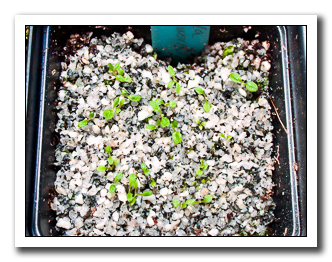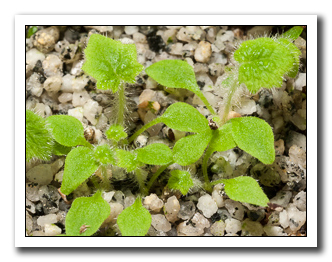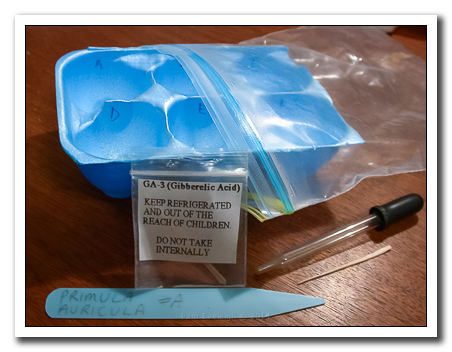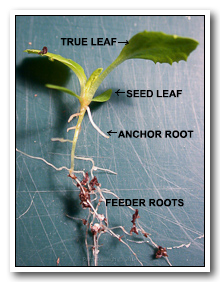Growing Primula from Seed
If you are interested in growing species primulas, then growing them from seed should be your first priority. Why?
-
1. Species grown from wild seed will be true and will show natural variation.
-
2. The best seed set and most vigorous plants come from the cross of pins and thrums. Growing plenty of seedlings ensures that you have both types.
-
3. Some Primula are short-lived and need to be raised frequently to keep them going.
-
4. Seedlings are generally virus free, whereas divisions may not be.
-
5. Old plants decrease in vigor and may not flower as frequently.
AND.... it's fun!

Primula seed can be obtained from many sources
including seed exchanges and commercial vendors. Unless you obtain seed from a
friend's garden or your own, it is unlikely to be fresh. Fresh seed usually germinates
quickly at room temperature but seed that is several months old and dormant may be
reluctant to germinate.
These are the methods I use to germinate primula seed:
-
Room Temperature - Pot is filled with moist seed starting mix, gently tamped down. Seed is sown on the surface with a layer of grit (see below). The pot is watered from the bottom by placing it in a shallow dish of water. Remove the pot from the water and place it with others in a tray. I use a clear plastic tray cover to keep the humidity high. The tray is placed under fluorescent lights in a basement room where the temperature is cool (10C-15C). The air under the lid gets warm when the lights are on, but cools down once they are off. If the seeds don't germinate within a month, then they go outside!
-
Cold stratify - Pot is sown as above, but is then placed in an unheated garage over winter. I don't have to worry above the tray lid blowing off, or animals or weather disturbing the pots as I would if they were outside. The pots freeze solid and then experience repeated freeze/thaw in the spring. I can't put the trays near a window in the garage, so I have a set of fluorescent lights that I use once the seeds start to germinate. I have also stratified seeds by placing them in a sealed plastic bag with a small amount of moist mix and keeping them in the fridge for 3 months before sowing them. I found this to be a bit fussy, so I don't do it anymore. If you do, be sure to check the fridge periodically for germination.
-
Treat with Gibberelic Acid (GA-3) - Seeds are soaked in GA-3, then sown using either method above. GA-3 has been used successfully on seeds of many plants to induce them to germinate. I have found that GA-3 does have a marked effect on Primula seed including quicker germination, eliminating the need for a cold period in some species and giving a higher percent germination.
| Seed Starting Tip: Don't sow the seed from one packet all at once. Save some in the fridge in case your first batch doesn't germinate or suffers a disaster before plants can become established in your garden. |
|
|
 |
 |
 |
|
|
Some people transplant their seedlings as soon as the seedlings produce their first set of true leaves. I like to wait longer than that - until the primula seedling produces its first anchor roots. These are roots that appear from the base of the plant and above the main root. They are thick and white and not as fragile as the feeder roots that are produced off the main root. For very small primulas or those that seem to be slow growing, leave the seedlings in the pot even longer - until you have small plants. Handle them carefully by a leaf and keep root disturbance to a minimum while transplanting. Fertilize at half strength. Some primulas hate being in pots, notably P. nivalis. |
 |
 |